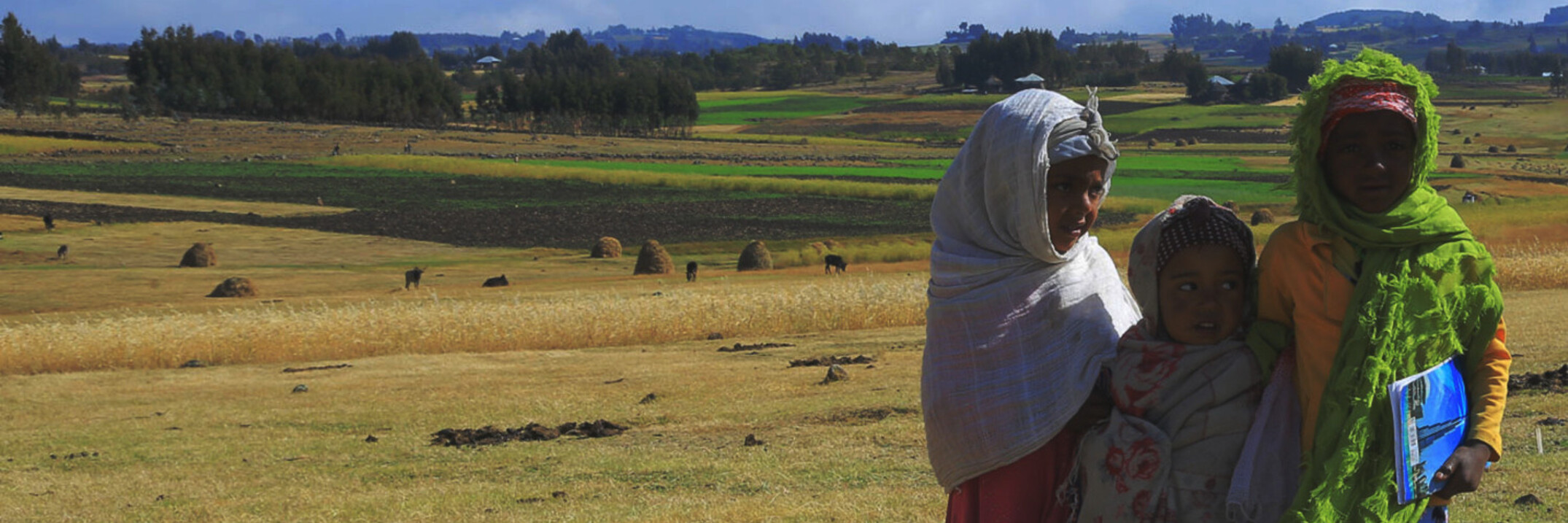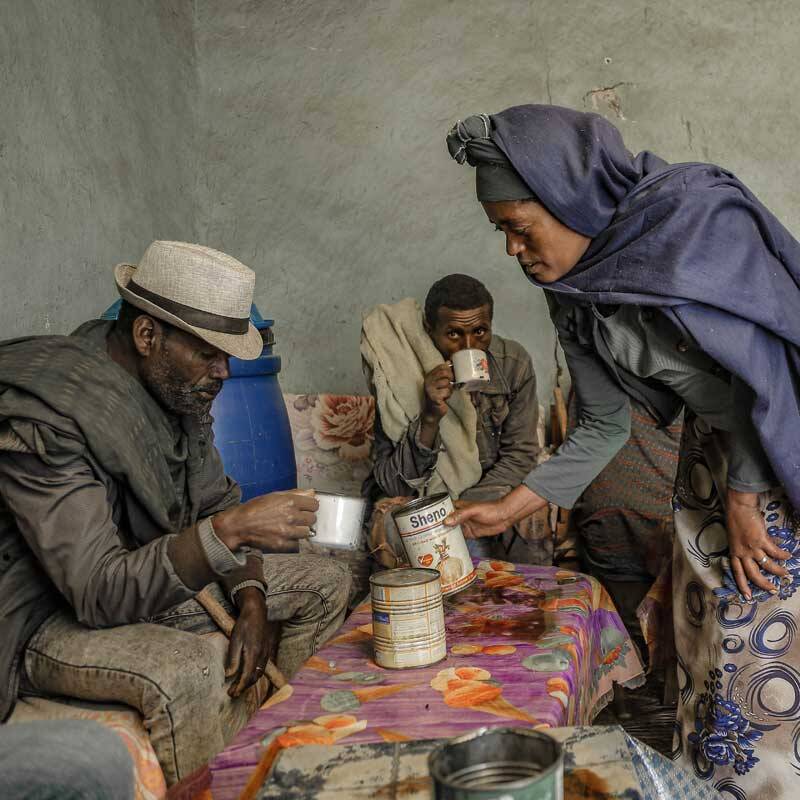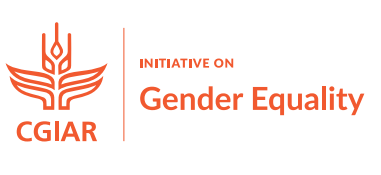


Author(s): Kamaldeen Mohammed1, Dina Najjar2, and Elizabeth Bryan3
1 PhD Student, Department of Geography and Environment, Western University, Canada
2 Senior Gender Scientist, Social, Economics and Policy Research Group, International Center for Agricultural Research in the Dry Areas (ICARDA), Rabat, Morocco
3 Senior Scientist, International Food Policy Research Institute (IFPRI), Washington DC, USA
Women are vulnerable to adverse climate change impacts, and their active involvement and decision-making in climate change and agrifood governance are limited, especially in the Global South. New research based on a strategic review of literature conducted as part of CGIAR research initiative HER+—Harnessing gender and social equality for resilience in agrifood systems—indicates that public policies are vital instruments toward improving women’s participation in climate change governance and enhancing their resilience.
Given that women are both vulnerable to climate change in unique ways and should make important contributions to increase the climate resilience of the agrifood sector, it is imperative for governments to design and enact policies to alleviate gendered constraints and build women’s resilience capacities in line with the Sustainable Development Goals. Public policies are crucial for both strengthening women’s resilience to climate change and promoting their leadership in climate change governance. This is because public policies shape the socioeconomic and political environment for the distribution of productive resources and participation in decision-making. First, this policy brief highlights how public policies at different scales can improve women’s resilience to climate change and environmental hazards. Second, it accentuates the means to enable women’s full and effective participation in climate governance at different scales. This policy brief is based on a strategic review of literature conducted as part of the CGIAR research initiative HER+: Harnessing gender and social equality for resilience in agrifood systems. The key findings and policy insights are presented below.

Despite increased policy commitments to promote gender equality, the percentage of women in national delegations at international treaties marginally increased from 30 to 38 percent between 2009 and 2021 (United Nations Framework Convention on Climate Change [UNFCCC] Secretariat 2021). Similarly, the percentage of heads of delegations in the Conference of Parties who were women increased from just 10 percent in 2009 to 13 percent in 2021, with a decrease to 9 percent in 2015 and a maximum of 26 percent in 2017 (UNFCCC Secretariat 2021; Women’s Environment & Development Organization [WEDO] 2022).
An analysis of gender strategic programs toward implementing Africa’s Nationally Determined Contributions (NDCs) showed that nearly 85 percent referenced gender with some provisions on improving women’s climate change resilience and promoting their opportunities for leadership in climate change governance (Kovaleva et al. 2022; Remteng et al. 2021). Additionally, climate-specific policies that are targeted toward resilience and disaster risk management include the Sendai Framework for Disaster Risk Reduction 2015–2030 (UN General Assembly, 2015).
National programs and plans such as the National Adaptation Plans (NAPs), National Adaptation Programs of Actions (NAPAs), National Development Plans (NDPs), and NDCs have become crucial policy instruments and contain policy outcomes that aim at promoting women’s full and meaningful participation in decisions related to climate change and disaster risk governance in national and regional institutions. Some countries in the Global South with promising gender approaches in national plans and strategies include Tanzania, Nigeria, Ghana, India, the Central African Republic, and Côte d'Ivoire.
Through policy initiatives, women have demonstrated effective leadership in their communities to make decisions that help address and adapt to the adverse impacts of climate change, including helping to devise early warning systems and reconstruction efforts in Mozambique, Bangladesh, Nepal, and India (Arnold et al. 2014; Dankelman 2008; Ministry of Environment, Republic of Mozambique 2014).
Approaches such as quotas, capacity building, and incentives emerged as notable approaches that public policies primarily employ to promote women’s participation and in climate change and disaster risk governance. More progressive gender quotas and incentives for quotas at the institutional and national levels can lead to increased women’s participation and leadership in climate change and environmental sustainability policy initiatives and decision-making (Cook et al. 2019).
One of the critical objectives of gender integration in climate change policies is to improve women’s resilience capacities. At the macro level, this may include changes in gender norms and greater agency in designing and implementing public policies. This spectrum of policies includes increasing women’s access to productive resources and services, women’s human capital development and economic development, and addressing harmful gender norms.
Improving women’s access to and control over these household and communal resources through policy provisions goes a long way toward improving their resilience. Some national policies have policy provisions that specifically aim to improve women’s access to and control of resources such as land, forest, information, extension services, and credit that can improve their resilience and adaptability to climate change and other related disasters (Ampaire et al. 2020; Kironde et al. 2021).
Inherent in some public policies are capacity-building initiatives that seek to increase women’s technical knowledge and human capital to engage in income-generating livelihoods. This training, coupled with women’s economic empowerment, reduces the impoverishment of women and enhances their climate change and disaster resilience. Examples include the Swamajayanti Gram Swaroj gar Yojana initiative and the Kundumbashree (meaning ‘prosperity of the family’) initiative of India (Bonny et al. 2023; Kandathil et al. 2022).
The values and behaviors deemed appropriate for women in rural areas inadvertently affect climate change policies and women’s capacity to respond to adverse impacts of climate change (Acosta et al. 2019). Consequently, policy approaches such as the Kudumbashree, and the National Action Plan on Gender and Climate Change of Nigeria, seek to eliminate gender stereotypes and sexism that hinder women’s adaptive and resilient capacities.
Click on a circle to see details with links to relevant studies.

© 2026 International Center for Agricultural Research in the Dry Areas (ICARDA)